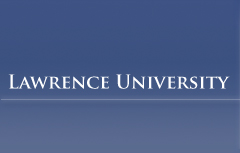
Files
Download Full Text (19.5 MB)
Description
Ring domain #1CHC. The RING finger is a specialized type of Zn finger consisting of 40–60 residues that binds two atoms of zinc, and is involved in mediating protein—protein interactions. Many zinc fingers bind nucleic acids. The presence of a RING finger domain is a characteristic of RING-class E3 ubiquitin protein ligases capable of transferring ubiquitin from an E2 enzyme to a substrate protein.
Publication Date
1-23-2013
Keywords
biochemistry, protein, teaching
Disciplines
Biochemistry | Biochemistry, Biophysics, and Structural Biology | Bioinformatics | Life Sciences | Molecular Biology
Creative Commons License

This work is licensed under a Creative Commons Attribution 3.0 License.
Find in Thingiverse
Recommended Citation
Hall, David J., "Ring Domain" (2013). Protein Domains. 9.
https://lux.lawrence.edu/chem_proteindomain/9


Instructions
Students learn in many different ways. One important way to learn is tactile. Some people learn best by actually touching three-dimensional models. In biochemistry classes, students usually visualize protein structures using programs such as pymol, rasmol etc. For teaching protein structure and function, I have paired 3D printed models with pymol visualization in an iPad.
There are over 40 different protein domains. The three dimensional structure of proteins and their domains is determined by x-ray crystallography or nuclear magnetic resonance (NMR). The 3D coordinates of each atom in a domain is determined and provided in a protein database (PDB) format. The PDB files for every protein structure ever determined are freely available at PDB.org. Below is an explanation of how to take a PDB file and convert it to an STL file.
Convert pdb to stl file
Select structure from pdb.org
open VMD 1.9.1 (ks.uiuc.edu/Research/vmd/)
Load pdb file →file “new molecule”
“graphics” → representations → drawing method “tube”
Radius 1.5
Resolution 10
Display →axes → off
File→ render → “enter file name” → STL → render
Open in replicator G
Scale to appropriate size (many times very small and unseeable!)
Upload to cloud.nettfabb.com to fix stl
Slice and print!